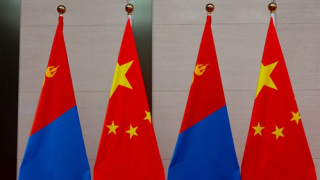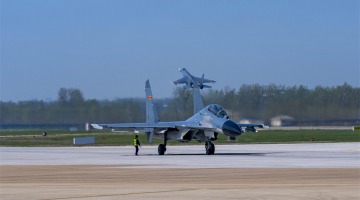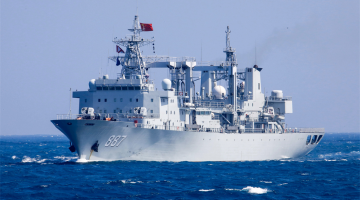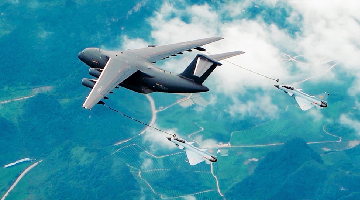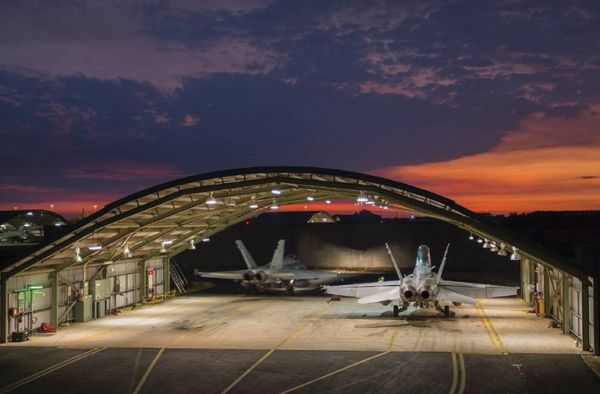
By Fang Xiaozhi
As the South Pacific country with the strongest military power, Australia has always upheld an independent defense program focused on enhancing its military strength. Meanwhile, based on the US-Australia alliance, it has acquired a great deal of advanced weapons and equipment, military intelligence and defense technologies from the US to quickly promote its defense transformation and military modernization.
Prime Minister of Australia Scott Morrison recently announced that the country will spend 1.1 billion Australian dollar (about USD726 million) upgrading Royal Australian Air Force (RAAF) Base Tindal in Northern Territory (NT) to deploy the F-35 stealth fighter jets purchased from the US. This will exert important impacts on Australia’s defense capability building and the development of its alliance with the US.
Tindal base upgrade will accelerate the modernization of Australian Air Force
In recent years, countries in the Asian Pacific region have ramped up their military buildup by buying huge amounts of advanced fighter jets, airborne early warning and control systems, and tanker airplanes. Their military development has in a way weakened the long-term air supremacy dominated by the Australian Air Force, which is unacceptable for the South Pacific country that has always relied on cutting-edge technologies for its regional superiority.
Therefore, the Australian Air Force has worked hard on its modernization in recent years and has bought or planned to buy a wide range of sophisticated warplanes including the F-35, in the attempt to maintain its dominance. Upgrading the RAAF Base Tindal will remove the space and facilities obstacles that may impede the modernization of the Australian Air Force, and effectively bolster its control capacity and combat superiority in key regions.
After a major upgrade, RAAF Base Tindal can deliver enhanced support capabilities for American and Australian fighter jets
Located in the southern hemisphere, Australia boasts a vast territory surrounded by the sea. Since its security threats basically come from the Indian Ocean and the Pacific regions, most of its military bases are located in the north to facilitate ground-to-sea or cross-sea operations. Besides, as America’s important ally in the Asia Pacific, Australia is called the “southern anchor” of their alliance in the region, and most of its bases are made available to American troops.
By upgrading the Tindal Base, Australia will be able to meet the operating demand of the F-35 squadron that’s about to form primary combat force, and better cope with the increasingly complicated regional security situation. On the other hand, it will be able to provide better services for American warplanes in Australia and make the two countries’ air forces more coordinated and combat-integrated.
Tindal base upgrade will deepen the Australia-US alliance
In recent years, with the deepening of the America-proposed “Indo-Pacific” strategy, the Pentagon is readjusting its troops in the Asia Pacific from the north to the south and has flexibly deployed the troops to the most appropriate spots where they are needed most based on actual conditions.
As America’s important ally in the Asian-Pacific region, Australia commands a special geographical location at the intersection of the Pacific and Indian oceans and boasts a vast territory and more appropriate distance compared to Japan and ROK. It is an “important destination” in America’s troops re-deployment because it is suitableto deploymilitary forces and conduct massive joint training.
Upgrading the RAAF Base Tindal is a major step taken by Australia to cooperate with the America in deepening Indo-Pacific strategy and enhance their alliance. Going forward, Canberra can deploy advanced warplanes at the base to correspond with Washington’s forces stationed at Guam and Hawaii, forming a powerful joint sea-air assault group in the Indo-Pacific region. In this way, America’s military presence and power-projection capability will be largely enhanced in the South Pacific and will lead to significant shifts in the regional balance of power.
In general, Canberra has displayed a high level of strategic understanding of Washington’s Indo-Pacific strategy that is aimed at forming a “free and open Indo-Pacific region”. In addition to assisting in the latter’s military deployments in the Pacific and Indian oceans, Australia will also probably see northwestward and step up military forces in Central Asia and the Middle East, to help the US firmly control the sea route from the Indian Ocean to the Pacific Ocean. These moves will not only further reinforce their defense partnership, but will also help Australia, a “regional middle power”, to achieve its goals in the global power system.
(The author is a researcher at the BRI Institute of Strategy and International Security, Fudan University)


